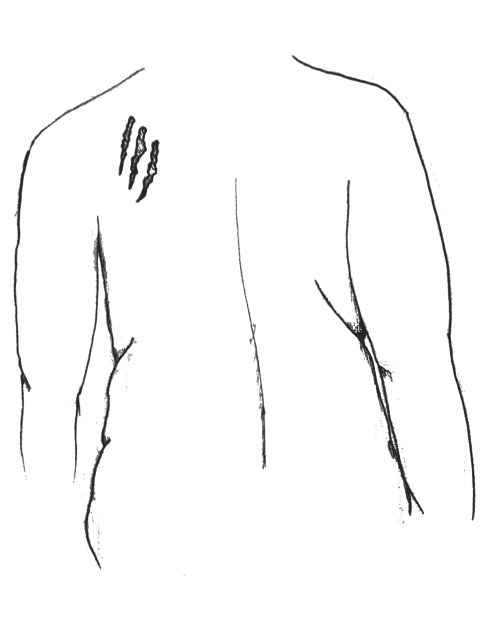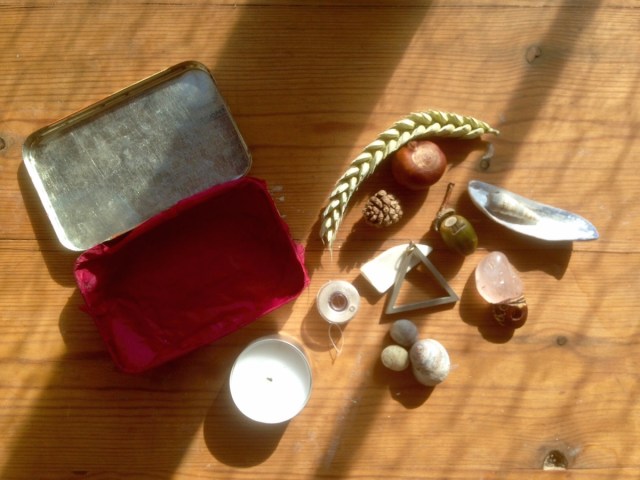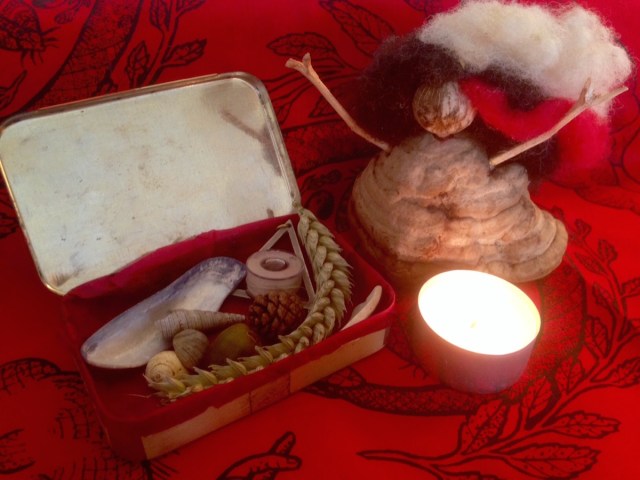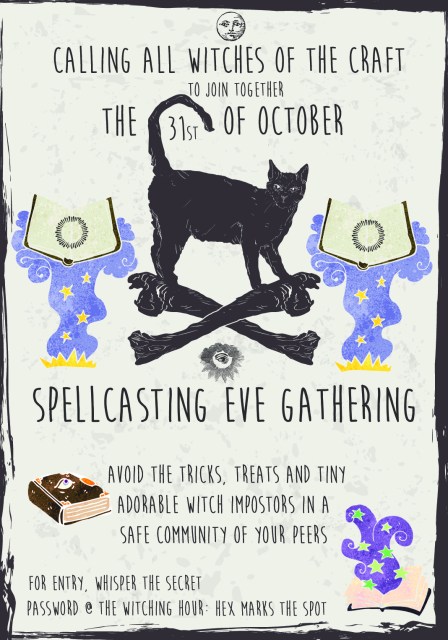
by Rory Midhani
feature image via Shutterstock
It’s the 13th of the month, so that must mean that it’s time for the third installment of Witch Hunt! Historically, the number 13 has been tied to witches because Christians thought that a witch’s coven would have exactly 13 members in order to mock Jesus and the 12 Apostles, or because Judas, who betrayed Jesus, was the thirteenth one to sit down at the Last Supper. Nowadays, some covens still stick with the 13 member tradition, but others are much more liberal with their numbers. The latter is especially true for witches who don’t believe in Jesus or the Christian Devil and therefore their practice has nothing to do with them.
Speaking of numbers, like I said, this is the 3rd installment of Witch Hunt, and like 13, 3 is a very popular number when it comes to superstitions and beliefs about witchcraft. For example, it’s long been considered bad luck to light three cigarettes with the same match, and it’s said that if you do, one of the three people will be struck with bad luck. Having three candles or lamps lit in a room is also a bad omen in many places, and you’ve probably heard someone say that “bad news comes in threes.” There are the famous Three Witches in Macbeth, and of course, the Rule of Three — a law held by many Wiccans and Pagans that states that whatever energy, positive or negative, that you put out into the world, will return to you threefold. Also, while we’re talking about superstitions, here’s a pretty cool article from io9 about weird local superstitions, that includes one about Witch Windows, something I’d never heard of before. Did you know that in parts of the US, specifically Vermont, people put slanted windows on their houses because it’s believed that witches can’t fly through a tilted window? That might be my new favorite superstition.

Couldn’t a witch just fly through any of the other windows on the house? “Vermont window“. Licensed under CC BY-SA 3.0 via Wikipedia.
It’s almost Halloween! And Samhain (more on that later)! And Dia de los Muertos! Do any of you have anything special planned? Remember, though, if you’re not Mexican or from another Latinx culture that celebrates the day, please don’t appropriate any images or practices from Dia de los Muertos.
Have you been keeping up with the other witchy goings on around Autostraddle? Over in Drawn to Comics, I talked about Carey Pietsch’s witchy comics Witches, Dragons, Magic and Cats and Lost Haven, and if you haven’t already checked those out, you should go do that now. KaeLyn showed you GAYmous’ “Disco Witch Sex Coven” music video for their song “Femme on Femme,” which I’m sure is something that many of you are already checking out. We’ve got some great ideas for Halloween costumes for your familiar (or pet). This isn’t an Autostraddle thing, but Allure had a list of 13 Witch-Inspired Beauty Products to Celebrate the Halloween Season, including a mugwort mask, black and purple lipsticks and the pretty terrific Bizarro Au Go-Go Beelzebub Bubble Baphomet Soap. Lastly, have y’all seen this amazing video of a group of New York brujas hexing Donald Trump? Normally I’m pretty wary of hexes, but I think this is for a good cause.
Here’s your regularly scheduled beginning of the hunt playlist.
River Witch Calling Down a Rain Storm
https://play.spotify.com/user/autostraddle/playlist/5fOIHE0l0PvWn98Yijq9Lo
The Difference Between Shrines and Altars
I’m not afraid to admit that until pretty recently, I don’t think that I would have been able to really explain the difference between these two important tools in many witch’s practices. I grew up seeing shrines, mostly dedicated to La Virgen de Guadalupe, and when I started seeing witches online talking about their altars and posting pictures, I assumed it was basically the same thing. However, as I’ve learned more about witchcraft and started actually practicing myself, I’ve learned that the two things are pretty different. While it’s true that both can be used to channel energy and cast spells, there is a difference, and they can be used for different things.
First of all, a shrine is a space dedicated to one or more deities, while an altar is any place that you practice your craft. Furthermore, a shrine is usually a fixed thing, in a permanent place, where an altar is something you set up whenever you need to use it. Deities or spirits dwell in shrines, and because of that, a shrine will often have an image or images of the deity, offerings made to the deity, a bowl or other place to put those offerings and other objects that relate to the deity. An altar can have some of these things, but also all of the tools that you need for your craft. An altar might have candles, herbs, stones, feathers, bones, incense and many other things that can be used for spellwork. As you can see, all of the objects that are part of an altar are things that you use, while many of the items in a shrine are things that you might place there and not move or use. You can also use the space that houses your shrine as an altar, depending on whether or not you think that would give your spell more focus, power or direction. Perhaps you already knew the difference, perhaps you just learned something new, either way, I hope you all the best whenever you’re using altars and shrines in your future witchery.
Words With Witches
by Rachel

Witch’s Mark (noun) – a mark believed to be made by the Devil upon someone who is initiated as a witch; varying accounts claim that the mark is made by the Devil clawing the witch, marking the witch with a hot brand, or licking them. Suspected witches could be searched for a “witch mark” to prove their witch identity. A “witch mark” can also refer to marks made by non-witches to attempt to keep witches out of their home: chalk circles or scratches on oak beams of fireplaces or floors. Similar but technically different to a witch mark is the “witch’s teat,” a bump or extra nipple believed to be used to feed a witch’s familiar or imp.
Witch/Craft
by Beth
You don’t need bags of room to create your own personal altar! If like me you live in a small space, or if you move around a lot, or if having a full-sized altar in your home just doesn’t feel right for you, how about making a teeny tiny pocket altar which you can carry around with you and set up anywhere you please? If you want to make a similar pocket-size shrine, instead of an altar, check out this article!
To get started you will need:
- A sweet tin (the rectangular kind with a hinged lid, you can often pick these up in junk shops)
- A tea light
- Something lovely to line your tin, to keep your items safe and stop them from rattling around

Different people use altars in different ways, so what you place in your tin will totally depend on your approach. Personally, I like to honour the seasons and the shifting elements of the year, changing my altar as the seasons change, so right now, my tin holds an acorn to represent autumn, a shell to represent water and intuition, and other personal things that feel important to me right now as the nights draw in and I welcome in a period of introspection.
Other things you can put in your tiny altar:
- Symbols of the elements, such as shells, pebbles, feathers or matches
- Charms, pendants or jewellery
- Small crystals or gemstones
- Miniature tarot cards
- Photographs, drawings, tickets, all kinds of mementos
- Locks of hair
- Fortune cookie legends
- Handwritten notes to yourself
- Names of loved ones, goddesses or deities
…and anything else that means something special to you!

Now, wherever you are, you can pull out your altar, light your candle, and take a moment to ground, pray, perform a ritual or spell, read tarot, meditate, have a moment of reflection or whatever feels right to you.
What will you put in yours?
Witches Who Sing
by Molly Ostertag
Wheel of the Year
by Beth
Samhain (November 1st) traditionally marks the Pagan new year – the end of summer and the beginning of winter. There is a focus on dying, both in terms of the dying back of the earth, and in how we traditionally confront themes of mortality and death at this time. Halloween (31st Oct) is the eve of All Saints and All Souls days, which finds its roots in Samhain (as so many Christian practices derive from earlier Pagan traditions) but is not the same festival.
Originally the “Feast of the Dead” was celebrated in Celtic countries by leaving food offerings on altars and doorsteps for the “wandering dead.” Today a lot of practitioners still carry out that tradition. Single candles were lit and left in a window to help guide the spirits of ancestors and loved ones home. Extra chairs were set to the table and around the hearth for the unseen guest. Apples were buried along roadsides and paths for spirits who were lost or had no descendants to provide for them.

Within all traditions — and none — we find that this is a time for paying respect to the dead, when the veil between this world and ‘the other’ is thinnest and we can communicate more easily with those on the other side. We find ourselves confronting death, spirits and our own mortality much more readily than normal. People gather around fires to feel safer together, to raise each others’ spirits as darkness comes in. Elementally, as autumn moves into winter we transition from the intuitive, emotional energy of water towards the more grounded and harder energy of earth.
Samhain (Summer’s End) is one of our four Greater Sabbats, the highest holy day of witches. […] It is new year’s eve for witches, as well as our third and final harvest festival. Samhain inaugurates Winter, is the final chance to dry herbs for winter storage, and a night when fairies supposedly afoot working mischief. It is also the Day of the Dead for us as it was for the Celts, Egyptians and ancient Mexicans, the night when we remember our loved ones and honour our ancestors.
The White Goddess (a Pagan resource website)

If you’d like to honour the season and mark the weird and wonderful witchy energies that surround us so much at Samhain, or feel closer to an ancestor, here are some suggestions:
- Hold a Samhain feast. Gather friends together and eat hearty food together, be warm, be intimate, share stories, perhaps talk about your roots, your families, lost loved ones. Toast the folks who went before you.
- Reconsider the meaning of ‘ancestor’. An ancestor may not be a family member, but instead someone who has influenced your life, who stood out in your community — an activist or leader, a mentor, a historical figure or cultural icon.
- Write a letter to an ancestor.
- Try this Samhain tarot reading.
- Learn an old recipe and about the lives of the people who would have been eating it years ago. (Here’s a cool story my mum told me about my kickass Granny Price.)
- Think about your mortality, work with the Death tarot card, meditate on cyclical change, death and rebirth, the transience of life and your beliefs about what happens when you die.
- Ivy’s Pentacles
- I’ve never held a seance, but here’s some information about that!
Many people use Samhain as a time of honoring dead relatives and friends, but it is also a good time for symbolic endings and coming to terms with those. On Samhain, we look back over the year and think about our own inevitable death and what it means to us.
A Webseries for Witches
The “magical girl” genre is often a favorite of people who are into witchy culture. It’s a narrative that promotes the idea that “normal” people, girls who don’t necessarily have anything special about them and who maybe get bad grades in school or aren’t popular can still be uniquely powerful and gifted, and have access to forces beyond our normal world. (It’s part of the same reason many of us are so into Harry Potter.) If this sounds even vaguely interesting to you, you’re a good candidate for someone who would love MisSpelled. Five young women of color, from varying backgrounds and with very different life stories, are “gifted” with magic powers on the same day. It turns their life upside down, and the only way they can deal is to work together, despite their differences. If only you could watch it all for free online! OH WAIT YOU CAN.
I was really into Season 1, and Season 2 will be coming our way soon. Now’s your chance to catch up!
Witchy Reading List
Not all of these books will work for or are recommended for each and every witch, make sure you find a book that speaks to you. These are just some crowd funded ideas for where you can get your start. Thank you to the Autostraddle Coven and commenters for their suggestions!
- Healing with Herbs and Rituals: A Mexican Tradition by Eliseo Torres
- Christians, Blasphemers and Witches: Afro-Mexican Ritual Practice in the 17th Century by Joan Cameron Bristol
- She Is Sitting in the Night: Revisioning Thea’s Tarot by Oliver Pickle
- Not in Kansas Anymore: A Curious Tale of How Magic is Transforming America by Christine Wicker
- The Spiral Dance: A Rebirth of the Ancient Religion of the Goddess by Starhawk
- Wicca: A Guide for the Solitary Practitioner by Scott Cunningham
- Drawing Down the Moon: Witches, Druids, Goddess-Worshipers and Other Pagans in America by Margot Adler
- Ariadne’s Thread: A Workbook of Goddess Magic by Shekinah Mountainwate
- Flame in the Cauldron: A Book of Old-Style Witchery by Orion Foxwood
- Her Hidden Children: The Rise of Wicca and Paganism in America by Chas S. Clifton
- When God was a Woman by Merlin Stone
- The Witch in Every Woman: Reawakening the Magical Nature of the Feminine to Heal, Protect, Create, and Empower by Laurie Cabot
- The Inner Temple of Witchcraft: Magick, Meditation and Psychic Development by Christopher Penczak
Practice of the Week
By Aja
My mother moved to San Francisco in 1970 from a little mining town two hours outside Chicago. When I was born a decade later, she made all my baby food by hand and insisted on cloth diapers (even then there were services that came and switched out the soiled cloths for fresh ones, no app needed), and though I was named after the Steely Dan album, she also raised me on mysterious, powerful sirens like Stevie Nicks, Sade and Bonnie Raitt. For years I told people I got my sarcasm from my mother, who quietly but doggedly shielded my mind from organized religion. That kind of freedom within a framework of second-order interpretation and abstract thinking was a gift, and instead of church, I was cradled constantly in Northern California’s sanctuaries of wilderness. Whether it was summers in Trinity Alps or on the Russian River, nighttime hikes way up in the redwoods or hunting abalone in Bodega Bay, my little nook of Mother Earth became the sole, inevitable source of reverence and awe I felt growing up.
As an adult, taking in the divinity of my surroundings is the closest thing I’ll ever have to prayer. A sense of awe consistently provides the kind of stillness I need to revive clarity and certitude from the dullness imparted by day-to-day life, even though its benefits and purposes can be distilled into a single scientific impetus. It doesn’t matter if you’re a witch or answer to a god or many gods or have no god at all, we all seek and are restored by the same stillness. Enter the atheist witch.
Mey wanted me to talk about my circles of power, which is both nothing like and not very different from casting a circle; I’m simply drawn to circles in nature. They could be small and made of rocks at the ocean’s edge, in a huge mysterious clearing in the woods, or inside a tight ring of trees off a Charles River path, but it just became habit to notice and then stand inside of them for a little while, taking in the scene around me and being still for a moment. For whatever reason, our little grey barn cat does this, too, in our backyard. There’s a slight 10′-diameter ring where a single summer swimming pool sat a few years ago; he just lays there in the grass and guards it. He won’t let the dogs in, and he slinks around its perimeter to chase birds and squirrels and any neighborhood cats out of it. It’s one of his favorite spots, and it’s how we came to call them circles of power, protective rings that restore real and imagined powers and strengths, something about them a little magical and a little creepy — in a good way. It’s good to be some place still that we alone manifest and command, even if only for a brief spell.

Graphic by Cecelia White.
Until next time, have fun Trick’r’Treating!


The number 3 and numbers divisible by it have long been special and mystically significant numbers in Western Europe. It’s been hypothesized 7 is lucky number because it is made up of 3.
This comes from academic analysis of fairy tales (such as the ones Bros Grimm collected) and old mythology of North Western Europe. I actually learned that in Catholic school sophomore or junior English class and not just something I noticed in my life long “study” of the “occult”.
The number 13 thing I want to explain but my resource on it is an old muddled memory from a book misplaced in the chaos of Katrina.
It’s something that’s brushed upon in the 13th Warrior.
12 is the count of the regular world, the standard corporal way of being and 13 is the step beyond. It is the Otherness, but not unholy for that is a Christian concept.
I cannot remember if this was something “Viking” or something Celtic because there’s something about trees attached to this muddled memory.
Both cultures placed some mystical meaning on specific trees for specific reasons that were distinctly different, but it’s been such a long time since I read that book it doesn’t matter that I know specifics now.
So uh it is the magical strangeness of 13 is a pre-christian thing to my muddled memory.
Thanks for all this interesting info!
You are welcome, information is useless if not shared.
How timely! I had a dream last night that my altar was tipped over, and it’s making me feel a bit uneasy, especially because I have some big events coming up. Does anyone know what this might mean?
Here are some Bangladeshi-specific ones:
* If you lost something and you’re trying to find it (like your keys), tie a know in whatever it is you’re wearing. Mum swears by this.
* If someone you know is wearing new clothes, pinch them for good luck/protection from Evil Eye. I sometimes ask my friends to pinch me for this reason.
* Don’t step over books on the floor, that’s rude!
Superstitions were MY JAM as an early teen and I would have happily followed a career in folklore.
cool! thanks for sharing!
Yay, a witchy post! I’m probably doing this for Samhain:
http://paganwiccan.about.com/od/samhainrituals/fl/Samhain-Ritual-to-Honor-the-Forgotten-Dead.htm
I’m so happy to see posts like this on here! I just recently started researching things about being Pagan and every bit of information is helpful!
I was just talking about how Paganism has been inspired by the LGBT+ movement and vice versa (I realized I was Pagan and loved the Goddess and feminine sexuality before I realized I was Bi, and the Goddess kept nudging me toward realizing that I should accept my bisexuality.) I attended ‘Pagan Pride Days’ and ‘Came out of the Broom Closet’ as a witch before I came out as Bi or attended Pride, even though Pagans are borrowing from the LGBT+ movement when using those terms. I’m happy to see topics like this here, and I hope to see more throughout the rest of the wheel of the year. Happy Samhain!
THIS IS FUCKING COOL
witch. windows.
i know, right?
I love this article! My only complaint is the part about not celebrating Doa De Los Muertos if your not Mexican or of Latin descent. I’m white of Scandinavian descent, but I grew up with a Guatemalan step dad who taught me how to cook Guatemalan food, taught me about Guatemalan culture (his grandmother was also a witch doctor- his words) and since he passed away I always celebrate Dia De Los Muertos in his honor. I think he would like it, and I don’t think it matters that I’m not biologically his kid or that I’m Lilly white. A lot of people grew up in mixed race house holds, and if our parental figures of different races passed down parts of their cultures to us, that’s now part of my life, too.
I feel like if it’s a part of your one of your parent’s cultures and they passed it down to you, then it is a part of your culture, so I don’t think that would be appropriating so that’s not a part of what I was talking about. Also, I’m one of those people who grew up in a mixed race house- my mom is Mexican and my dad is white.
Ok, thanks Mey! It just sounded like kind of a blanket statement, so I felt like I had to comment on it.
I’ll probably post this on the Facebook coven, too, because it’s really important to me and I can’t be the only queer witch with this problem.
For others with anxiety disorders or obsessive-compulsive tendencies, how do you balance ritual and superstition with unhealthy magical thinking? I know I have to walk a very fine line between “ritual” (magic) and “ritual” (mental illness). How do you manage that?
Or, if you’re like me and you don’t always manage it very well: hi.